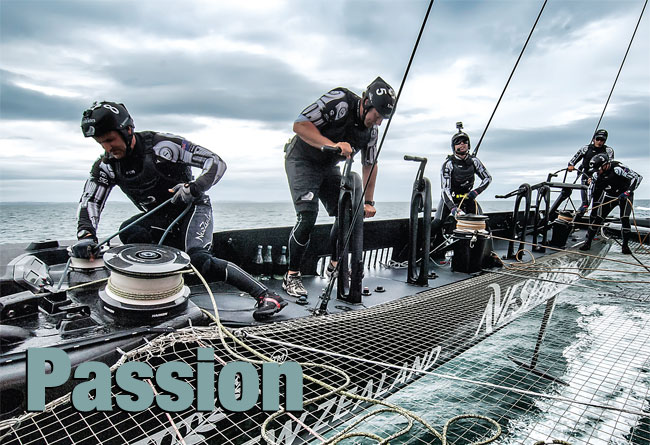
The kids think it’s a mid-life crisis, but they are happy it does not involve dyeing my hair or buying impractical, expensive sports cars. Just sailboats – funny that.
It started, strangely enough, when I was thinking about writing of the lack of ‘trickledown’ that the 2013 America’s Cup was going to pass on to mainstream yachting. In the past, America’s Cup technology has had a direct, if not immediate, effect on sailboat racing. Cup programmes over the past 30-odd years have taken sail material from Dacron, to Mylar, to Kevlar, to Cuben Fiber, to carbon. Rigging systems, winches, carbon spars, gennakers, performance-measuring instruments and software, all are spin-offs from various cutting-edge programmes pushing to capture the Holy Grail of yachting.
In this America’s Cup when I look at what trickledown, or spin-offs, are on offer to the everyday sailor, it is clear to me that the cupboard is pretty bare. Oh, we have lots of cool stuff, like wing masts, S-shaped boards that can be moved in any direction with hydraulics, big cats that ride up on foils like those Russian powered hydrofoils, but these are pretty irrelevant concepts to anyone without 60 people on the payroll and a US$50million budget for their yachting. And that would be about everyone!
I am not bagging the new AC72 cats, heavens no, just that they are not very practical for normal sailboat racing. I don’t see 100 boats being built like the last two America’s Cup classes that came about by consensus.
Take foiling, for example. It is not just a matter of plugging in a board that foils and you are off. At different speeds you need a multitude of different settings and most are changed hydraulically. It is the most complex, thus high-maintenance, system I have ever seen on a boat. A genuine nightmare. It would be like me stepping into a Formula 1 racecar. ‘Wonder what all these buttons on the steering wheel do... Oops.’ And just as with Formula 1, the gap between their racing and a weekend rally driver is huge and always getting wider.
There will be a couple of things on the AC72 that will help the normal racer, like slick furling systems for the downwind sails. All the 2013 America’s Cup teams have made big improvements there. And winch and hydraulic systems are making nice gains; but I am already thinking that the future for these systems will use electric not manual power – as the AC72 rule requires.
While all that was spinning in my head I starting thinking… Where is the whole sport heading? What kind of boats and sailors are going to be racing in the future?
If you could fast-forward a dozen years what would you see? Both at the grand prix level and, perhaps more importantly, at the local level. Will all the attention going into cats with wings, foiling Moths, skiffs, kiteboards, will that have made all other types of boats and sailors relics of the past, extinct as the dinosaurs?
We invite you to read on and find out for yourself why Seahorse is the most highly-rated source in the world for anyone who is serious about their racing.
To read on simply SIGN up NOW
Take advantage of our very best subscription offer or order a single copy of this issue of Seahorse.
Online at:
www.seahorse.co.uk/shop and use the code TECH20
Or for iPad simply download the Seahorse App at the iTunes store


